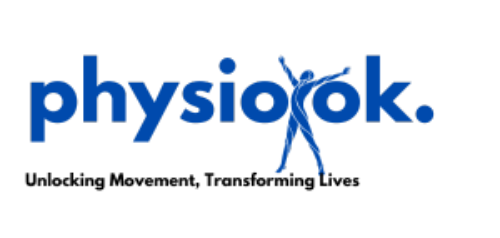Nerve pain, or neuropathic pain, often feels like sharp, burning, or shooting sensations that stem from nerve damage or dysfunction. Unlike other types of pain, nerve pain can persist or worsen over time, even with minimal physical activity, making it challenging to manage. Physiotherapy offers several effective methods to help alleviate nerve pain, improve function, and enhance the quality of life for individuals dealing with this complex condition.
What Causes Nerve Pain?
Nerve pain can result from various factors, including:
- Injuries: Trauma to nerves, such as spinal injuries or fractures, can lead to nerve damage.
- Diabetes: High blood sugar levels can damage nerves, often in the legs and feet.
- Herniated Discs: When discs press on spinal nerves, it can lead to pain that radiates down the limbs.
- Infections: Certain infections, like shingles, can inflame nerves.
- Nerve Compression: Conditions like carpal tunnel syndrome involve nerve compression, causing pain in affected areas.
- Autoimmune Disorders: Diseases like multiple sclerosis or rheumatoid arthritis can attack the nervous system.
How Nerve Pain Affects Daily Life
Nerve pain can be persistent, leading to difficulty with daily activities and impacting mental health. Common effects include:
- Reduced Mobility: Pain may make movement challenging, limiting physical activity.
- Sleep Disturbances: Nighttime pain can interfere with sleep, causing fatigue.
- Emotional Strain: Chronic pain can contribute to anxiety and depression.
- Weakness and Numbness: Muscle weakness or numbness often accompanies nerve pain, particularly in the limbs.
How Physiotherapy Can Help Alleviate Nerve Pain
-
Pain Management Techniques
- Physiotherapists employ modalities like Transcutaneous Electrical Nerve Stimulation (TENS), ultrasound therapy, and heat or cold applications to reduce nerve pain intensity.
- These treatments increase blood flow, reduce inflammation, and stimulate endorphin release, providing pain relief without medication.
-
Nerve Gliding Exercises
- Nerve gliding, or neural flossing, involves gentle exercises to improve nerve flexibility and reduce compression. These exercises can alleviate tension and improve the mobility of nerves.
- Common for conditions like carpal tunnel syndrome and sciatica, these exercises release "trapped" nerves, reducing pain.
-
Strengthening and Stretching Exercises
- Strengthening exercises support affected areas, alleviating pressure on nerves. Stretching routines target muscles that might be compressing or irritating nerves.
- By enhancing strength and flexibility, patients can reduce pressure on nerves and minimize symptoms of neuropathic pain.
-
Postural Training
- Poor posture, particularly in the back and neck, often exacerbates nerve pain. Physiotherapists teach proper alignment and posture techniques to prevent additional nerve compression.
- Postural correction is beneficial for reducing pain in conditions like sciatica, where nerve compression often results from spine misalignment.
-
Manual Therapy and Massage
- Hands-on techniques like massage therapy, joint mobilization, and soft tissue manipulation can ease nerve tension, reduce inflammation, and improve circulation.
- Manual therapy also enhances muscle relaxation, alleviating stiffness that may worsen nerve pain.
-
Education on Movement and Activity Modification
- Physiotherapists educate patients on safe movement strategies to protect nerves from further damage. This may include ergonomic adjustments at work or tips for daily activities.
- For example, adjusting desk posture or learning proper lifting techniques can help reduce nerve pain exacerbation.
-
Hydrotherapy and Aquatic Exercises
- Exercising in water provides resistance without placing undue strain on joints and nerves, making it ideal for individuals with neuropathic pain.
- Warm water in hydrotherapy can reduce inflammation, improve circulation, and ease muscle tension, providing significant relief from nerve pain.
-
Mind-Body Techniques for Pain Management
- Techniques such as breathing exercises, mindfulness, and gentle yoga support relaxation, reduce muscle tension, and manage pain perception.
- Physiotherapists often incorporate mind-body techniques to help patients develop resilience to pain, promoting a holistic approach to neuropathic pain management.
Benefits of Physiotherapy for Nerve Pain
- Non-invasive Pain Relief: Offers a safe, medication-free alternative for long-term pain management.
- Increased Mobility: Exercises improve flexibility and strength, making it easier to perform daily activities.
- Enhanced Quality of Life: Pain relief and increased mobility positively impact mood and energy levels.
- Prevention of Further Damage: Teaching proper movement and posture reduces the risk of aggravating nerve pain.
- Better Sleep: Reduced pain allows for restful sleep, aiding overall recovery and emotional well-being.
When to Seek Physiotherapy for Nerve Pain
If nerve pain disrupts daily activities, affects sleep, or becomes persistent, consulting a physiotherapist may be beneficial. Physiotherapists can develop a personalized treatment plan that addresses specific causes of nerve pain, targeting relief at its root and providing effective strategies for long-term management.
Conclusion
Physiotherapy is an invaluable tool in managing nerve pain, combining targeted exercises, manual therapy, and lifestyle guidance to provide effective, holistic relief. For individuals grappling with the persistent discomfort of neuropathic pain, physiotherapy offers strategies to reclaim comfort, mobility, and quality of life.
